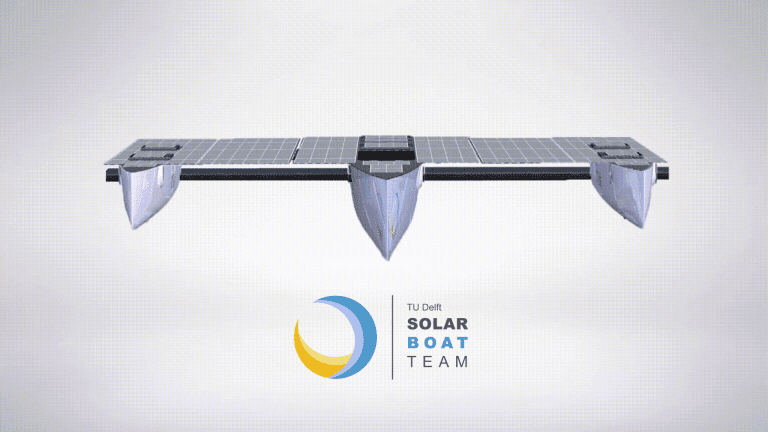For the first time in its history, the Delft Solar Boat team will take on the challenge of crossing the oceans with its seaworthy solar boat. Read their first blogpost.
One the side hulls that the team has transported to the Dreamhall. (Photo: Redmer Aarnink)


For this challenge, the design of the boat had to be completely different from previous years. The team designed a boat that is eight metres long, six metres wide and has a solar deck with an area of 28 m2. This is the same size as nine double beds.
There are two main reasons that the team built a boat of these dimensions. First of all, a wide boat allows greater stability, which is definitely necessary on the open seas. Second, a bigger deck means more solar panels which generate more energy.
A modular design
A vessel of this size has a great impact on our project. One of the obvious difficulties is transport. We have to transport it every time we work on it, test it, race it or showcase it. And if we were to transport the boat as a whole, it would take up two highway lanes! Next to that, the boat doesn’t even fit in our workshop. To solve this problem we had to make a modular design. This means that the boat consists of three hulls that can be attached to each other.
Going for a modular design was not an easy decision, though it might sound like an obvious choice. Modular boats have several implications. If the attachments between the hulls move just a bit, they will loosen and start moving more and more every time the waves crash against the hulls.


This was not the only problem the waves caused. Because of strong waves, we had to make the structure of the boat able to withstand extreme forces. To accommodate this we did several things, including building two carbon beams that connect the three hulls. All of these extras add weight and complexity to the entire design. But the size of our boat simply outweighed all the challenges that modularity entails.
Logistics
We have assigned a Chief of Logistics who works on the transport of the boat. While previous teams could simply lift the boat (which weighted 110 kg) into and out of the water by hand, this year we will need a big crane to lift it every time we want to put it in the water.
All of this makes the project even more challenging but to us so much more awesome. Now that we are done with the design, we will start production. We will update you on that in the next blog. The coming months will be hard work for us, since we will be taking part in the world championship for solar boats in July and the world record attempt at the beginning of August. So definitely stay tuned for more updates on our progress!
- Read more on the Solar Boat Team website
Redmer Aarnink / Exposure manager Solar Boat Team 2019


![[Blog #1] The challenges of a bigger boat](https://delta.tudelft.nl/wp-content/uploads/2023/12/solarboat-feb-web.jpg)
Comments are closed.